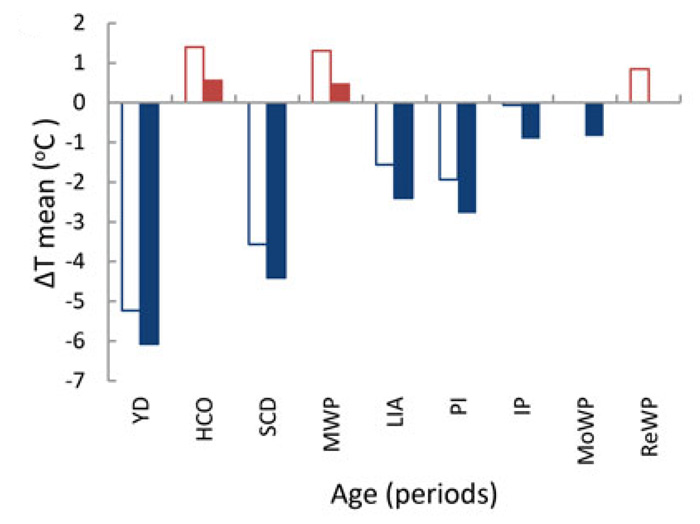| Follow @co2science |
Paper Reviewed
Aizen, E.M., Aizen, V.B., Takeuchi, N., Mayewski, P.A., Grigholm, B., Joswiak, D.R., Nikitin, S.A., Fujita, K., Nakawo, M., Zapf, A. and Schwikowski, M. 2016. Abrupt and moderate climate changes in the mid-latitudes of Asia during the Holocene. Journal of Glaciology 62: 411-439.
Introducing their study of the temperature history of mid-latitude Asia, Aizen et al. (2016) describe how they used a multiple-parameter dating technique to establish a depth/age scale for a surface-to-bedrock ice core retrieved from the cold recrystallization accumulation zone of the Western Belukha Plateau in the Siberian Altai Mountains by a team of scientists from the United States, Japan and Russia. And this work revealed, as they report, that "the modern Altai glaciers were formed during the Younger Dryas (YD) (~10,950 to ~7,500 cal years BC), and that they survived the Holocene Climate Optimum (HCO) (~6500 to ~3600 cal years BC), as well as the Medieval Warm Period (MWP) (~640 to ~1100 AD)."
Of most interest to the current population of the Earth, however, was the finding of the eleven researchers that "periods warmer than modern periods occurred for ~6.5 ka, including during the Holocene Climate Optimum and Medieval Warm Period." More specifically, they write that "recent temperatures ([ReWP] 1993-2003) are, on average, 0.5°C lower than air temperatures estimated during the MWP and Holocene Climate Optimum" (see figure below).
And this finding suggests that there is nothing unusual, unnatural or unprecedented about the air temperatures that are currently being observed around the world. In fact, it actually supports that fact.

Average estimations on reconstructed air temperature deviations, ΔT, (°C) from the Recent (filled column: red is for positive and blue is for negative deviations) and Modern (not filled) Warm Periods for the different historical periods. Period abbreviations include the following: Younger Dryas (YD, 10,950-7500 BC), Holocene Climate Optimum (HCO, 6500-3600 BC), Severe Centennial Drought (SCD, 2000-1000 BC), Medieval Warm Period (700-1150 AD), Little Ice Age (LIA, 1550-1900 AD), Pre-industrial Period (PI, 1900-1950), Industrial Period (IP, 1951-1973), Modern Warm Period (MoWP, 1973-2003) and Recent Warm Period (ReWP, 1993-2003). Source: Aizen et al. (2016).




